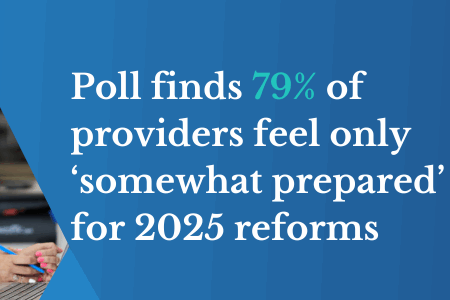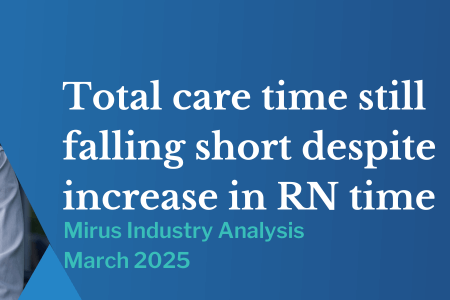6 effective strategies for aged care workforce management
August 10, 2023 | AN-ACC

By Tom Murphy, General Manager of Product and Operations
Optimising rostering in aged care organisations is a delicate balancing act—ensuring high-quality care for recipients while managing workforce costs efficiently. From 1 October 2023, this challenge increases significantly as care minute compliance becomes mandatory. To be successful, forward thinking Aged Care providers should start embracing scenario planning as part of their rostering practice.
Scenario planning is a strategic decision-making process that involves exploring various plausible future outcomes. The process typically starts with identifying different factors that could have an impact in future. Based on these factors, scenarios can be developed – often representing baseline, best-case and worst-case future states.
Once developed, organisations can create response plans to these scenarios. The provides much more certainty where a future is unknown or unpredictable.
Applied to workforce planning and rostering, scenario planning and analysis is a powerful tool that allows CFOs and HR managers to navigate this complexity with confidence. It provides a much clearer picture over future workforce costs and resource needs.
“The nicest thing about not planning is that failure comes as a complete surprise and is not preceded by a period of worry and depression.”
John Harvey Jones
3 key benefits of embracing scenario planning in your rostering process.
Specifically in Aged Care, by creating “what-if” scenarios, you can model various staffing situations based on fluctuating resident numbers, staff availability, and changes in care minute targets. This enables you to identify potential staffing gaps or overstaffing instances and make data-driven decisions to ensure optimal staff allocation.
1. Risk reduction by planning for change
Traditionally, rostering is led by a master roster which is the static plan that shows all the shifts that need to be worked and by whom. This approach doesn’t necessarily consider changes in resident numbers nor the quarterly change in care minute targets. For example, what would happen if an increase in acuity – and therefore care minute targets – meant that you needed to suddenly recruit more staff to ensure compliance? Likely by the time more staff were recruited, acuity would have again changed, and the cycle would continue.
However, by starting with scenario led approach that predicts future demand variations, organisations can create agile roster templates that lead to effective staff schedules. Should there be a forecasted change in acuity, recruitment activity can commence well ahead of when it’s needed.
2. Proactive workforce planning optimises labour costs
Similarly, by recycling the same master roster from one pay period to the next, you can run the risk of rostering over and above what’s required to ensure care minute compliance.
One approach is to keep your hours as stable as possible by managing admissions and reclassifications but often this is out of your control. Consider the scenario where you experience an increase resident discharges and no new admissions. With a static master roster, you’d run the risk of being over-staffed and over-budget and often this is a time-consuming, reactive process to overhaul the roster to accommodate the change. Inevitably this would lead to overspending – remembering that AN-ACC funding is inextricably linked to staff cost.
Scenario planning allows you to develop different scenario templates that provide an agile response to the variability you may be faced with.
3. Enhanced compliance and quality of care
Compliance with regulatory requirements is non-negotiable in the aged care sector. Failing to meet care minute requirements or having unqualified staff can lead to reputational risk and unwanted focus from the Quality and Safety Commission. By modelling different scenarios, you can ensure that you can maintain staffing levels that meet the care needs of residents and care minute targets. This not only ensures compliance but also enhances the quality of care delivered. Residents receive the level of attention and support they deserve, leading to improved resident satisfaction and overall care outcomes.
Scenario planning as part of your rostering process offers significant advantages beyond simply publishing the same roster every pay period. To be in the best possible position to meet care minute targets, it takes a proactive approach towards resource planning, and leveraging scenario planning as much as possible. By incorporating this into their process aged care providers can be more prepared as things change.
If you’re ready to bring scenario planning into your rostering process and prepared for mandatory care minutes, click here to learn more about Care Minute Manager or contact us below.


